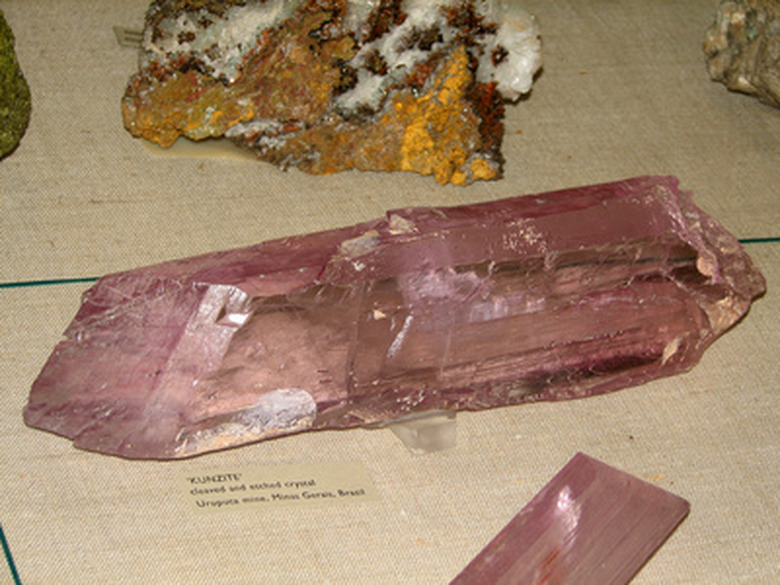How To Make Electricity With Quartz Or Diamonds
Quartz can produce an electrical reaction. Minerals with this ability are called piezoelectric. The electrical reaction can be created by applying a charge, physical stress, or heat. Quartz is also distinguished as a gem that is capable of triboluminescence, or the ability to create light under pressure. This mystery light is not electricity in the form that we know it, but it is often mistaken as such. The most prominent scientific theory is that it is caused by the separation of chemical and electrical bonds. Diamonds are actually insulators; they do not conduct electricity.
Piezoelectric Example
Step 1
Attach the cardiac monitoring electrodes to the sides of the quartz. Attach the voltmeter or multimeter to the electrodes. This will help to monitor the electrical changes that the quartz undergoes.
Step 2
Place the prepared piece of quartz under the cardboard or blanket to protect it. Have the voltmeter close enough that you can see when it spikes, or ask a friend to help monitor it. Hit the quartz with the hammer, not so hard that it breaks but enough to make an impact on it. The meter should have a quick spike in electricity because of mechanical stress on the object.
Step 3
You can see the same effect by placing the quartz into a frying pan and heating it, using caution not to burn the electrodes. The heating causes the electrons to excite and generate a mild electrical charge.
Triboluminescence
Step 1
Turn out the lights to assist with visibility.
Step 2
Hold a piece of quartz in each hand.
Step 3
Press the quartz pieces against one another and rub one against the other. This pressure should create an orange glow between the pieces. Although triboluminescence is not completely understood, prevailing theories say it is because of a break and reunification of electrical bonds.
Things Needed
- 2 pieces of quartz
- 2 cardiac monitoring electrodes
- Multimeter or voltmeter
- Frying pan
- Stove
- Hammer
- Cardboard or blanket
TL;DR (Too Long; Didn't Read)
A common misconception is that a quartz watch runs on electricity generated by quartz alone, when in fact the quartz is charged with electricity from a battery. Electricity is produced from electrons in motion. The quartz in this situation is cut in exacting shapes and charged by the battery. The charge causes the electrons to move, while the exact cuts set that movement at a given frequency. This movement sets the pace for a watch and makes it run.
Cite This Article
MLA
Myers, Josie. "How To Make Electricity With Quartz Or Diamonds" sciencing.com, https://www.sciencing.com/make-electricity-quartz-diamonds-6456846/. 24 April 2017.
APA
Myers, Josie. (2017, April 24). How To Make Electricity With Quartz Or Diamonds. sciencing.com. Retrieved from https://www.sciencing.com/make-electricity-quartz-diamonds-6456846/
Chicago
Myers, Josie. How To Make Electricity With Quartz Or Diamonds last modified March 24, 2022. https://www.sciencing.com/make-electricity-quartz-diamonds-6456846/
